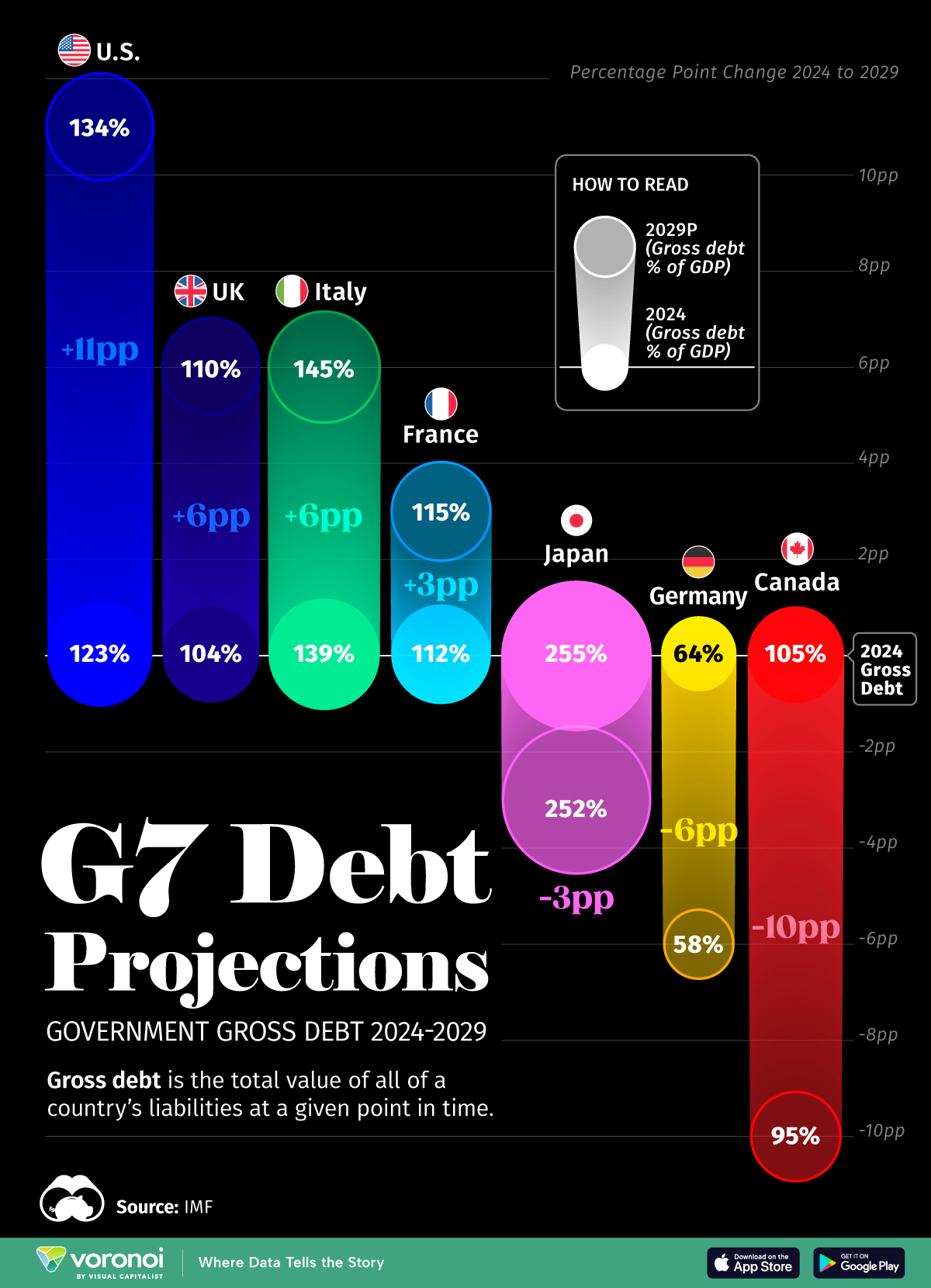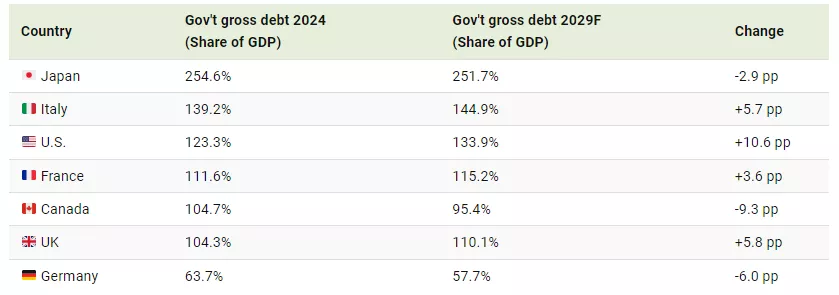(Click on image to enlarge)
On Sept. 18, 2024, the U.S. Federal Reserve reduced its benchmark interest rate by half a percentage point to a range of 4.75% to 5%. This move is expected to decrease short-term borrowing costs, including those for U.S. government debt.When the Fed lowers the federal funds rate, it on Treasury bills and other short-term government securities, which in return reduces its borrowing costs on newly issued short-term debt. While this reduction in rates will help reduce debt-servicing costs, the U.S. is still projected to see the biggest increase in its gross debt of all G7 nations over the next five years.This graphic uses data from the International Monetary Fund’s (IMF) of the World Economic Outlook to show how the U.S. stacks up against its G7 counterparts in terms of projected gross debt as a percentage of GDP in 2024, and how debt is forecasted to change by 2029.
Methodology: Defining Gross Government Debt
Gross debt is the total value of all of a country’s liabilities at a given point in time. Net debt is gross debt less a country’s financial assets, including cash reserves or investments. The debt figures in this infographic are of government debt, and don’t include public sector debt from provincial or state-level debt.For more data on global debt, the IMF’s features datasets of both public and private debt, broken down into more detailed categories.
Which G7 Countries Are Projected To Grow Their Debt?
Below, we show the gross government debt projections (as a share of GDP) for G7 nations from 2024 to 2029.
The U.S. is predicted to see the greatest accumulation in gross debt over the next five years, with the IMF projecting an increase of nearly 11 percentage points from 2024 to 2029.In 2023, the U.S. made up of the total global government debt at $33.2 trillion, and now likely holds an even larger share as in July of 2024 the country hit a record in government debt.While the U.S. is projected see the greatest increase in government debt out of the G7 countries by a wide margin, it typically has more in sustaining higher debt levels since it is the supplier of the world’s primary reserve currency.On the other hand, Japan is the G7 country with the greatest gross debt burden, with a projected debt-to-GDP ratio of 254.6% in 2024. Even if the country is forecasted to see a decline of three percentage points in its share of debt-to-GDP, Japan’s projected debt-to-GDP ratio in 2029 will still be a staggering 251.7%., , and multiple are some factors that contribute to the Japanese government’s high debt levels.Only Japan, Canada, and Germany are predicted to see gross debt levels fall in the next five years. Canada is expected to see the greatest decrease in debt-to-GDP levels in the next five years with a decline of nearly 10 percentage points, while Germany is forecasted to have the lowest debt at just 58% of its GDP in 2029.More By This Author:
Government Debt Projections For G7 Countries (2024-2029F)

